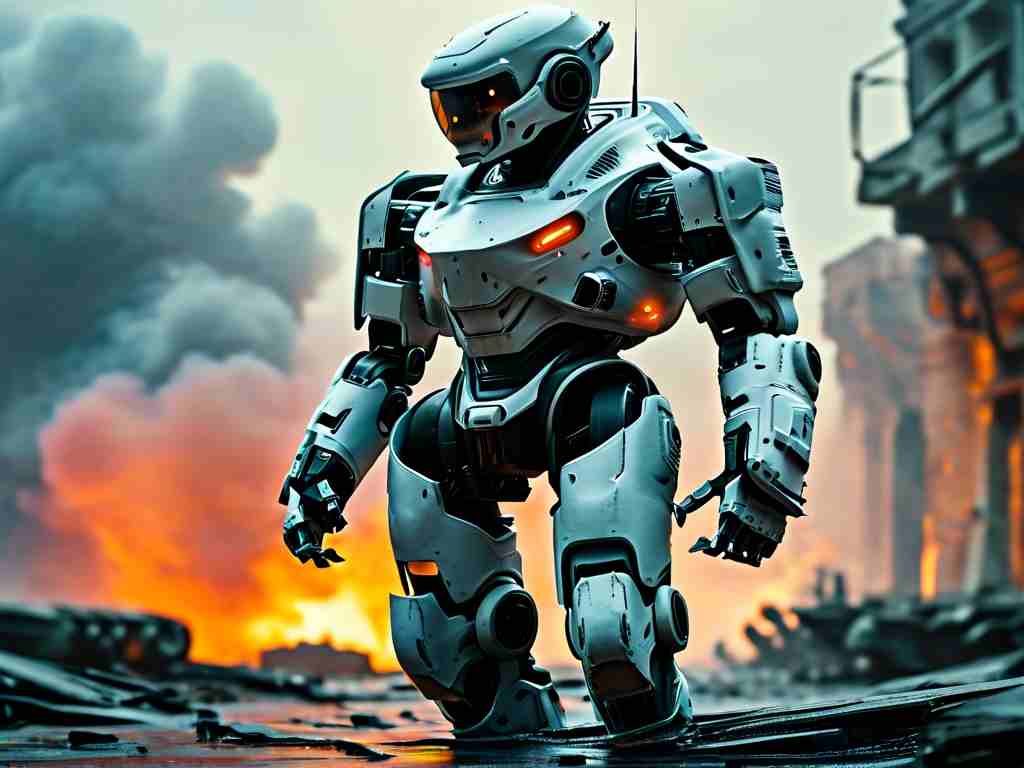The integration of robotics into military operations represents one of the most transformative advancements in modern warfare. At its core, robotic military technology relies on three foundational principles: autonomous decision-making frameworks, sensor-to-action synchronization, and adaptive human-machine collaboration. These systems are designed not to replace human soldiers but to augment their capabilities in high-risk scenarios while minimizing operational vulnerabilities.

Autonomous Decision-Making Frameworks
Modern military robots operate through layered autonomy architectures. Unlike industrial robots programmed for repetitive tasks, combat-ready systems employ machine learning models trained on vast datasets of battlefield scenarios. For instance, unmanned ground vehicles (UGVs) use reinforcement learning to navigate unpredictable terrain while avoiding collisions. These algorithms analyze real-time lidar and thermal imaging data to adjust movement patterns within milliseconds. Crucially, such systems incorporate "human-in-the-loop" safeguards, where critical decisions—like weapon deployment—require manual authorization. This balance ensures operational efficiency without compromising ethical oversight.
Sensor Fusion and Response Coordination
A key challenge in military robotics lies in harmonizing data from disparate sensors. A typical combat robot integrates visual cameras, infrared scanners, acoustic detectors, and electromagnetic spectrum analyzers. Advanced systems, like the U.S. Army's Modular Advanced Armed Robotic System (MAARS), use neuromorphic processors to mimic the human brain's ability to prioritize sensory inputs. When detecting an unidentified object, the system cross-references radar signatures with preloaded threat databases while simultaneously assessing environmental factors like wind speed. This multi-layered analysis enables split-second responses—such as taking cover or alerting nearby units—that would overwhelm human cognitive processing speeds.
Human-Robot Team Dynamics
The most effective military robots function as force multipliers within hybrid teams. Take the example of drone swarms deployed for reconnaissance missions. While individual drones map terrain, their collective AI identifies patterns invisible to human analysts, such as subtle soil disturbances indicating buried explosives. Meanwhile, human operators focus on strategic decisions, like redirecting the swarm based on evolving mission parameters. This symbiosis is enhanced through natural language processing interfaces, allowing soldiers to issue complex commands via voice or gesture controls during active engagements.
Ethical and Technical Challenges
Despite their advantages, autonomous military systems raise significant concerns. A 2023 study by the Center for Naval Analyses revealed that 68% of AI-driven targeting systems exhibit bias in cluttered urban environments, misclassifying civilian objects as threats under certain lighting conditions. To address this, next-generation platforms incorporate explainable AI (XAI) modules that audit decision pathways. Additionally, cybersecurity remains a critical vulnerability—a hacked robotic system could feed false data or disobey commands. The Pentagon's recently unveiled "Quantum-Resistant Encryption Standard" aims to mitigate such risks by 2025.
Future Trajectories
Emerging technologies promise to reshape robotic warfare further. Meta-materials that bend radar waves could render robots nearly invisible, while graphene-based batteries may triple operational endurance. Perhaps most revolutionary is the development of self-repairing nanobots capable of patching damaged components mid-mission. However, international governance lags behind these innovations. The lack of a unified treaty on autonomous weapons underscores the urgent need for global ethical standards—a challenge as complex as the technology itself.
In , robotic military technology operates at the intersection of artificial intelligence, mechanical engineering, and tactical doctrine. Its evolution will depend not just on technological breakthroughs but on resolving the moral and strategic dilemmas inherent to automated warfare. As nations race to develop smarter systems, the ultimate test lies in ensuring these machines serve as protectors rather than uncontrolled agents of destruction.

